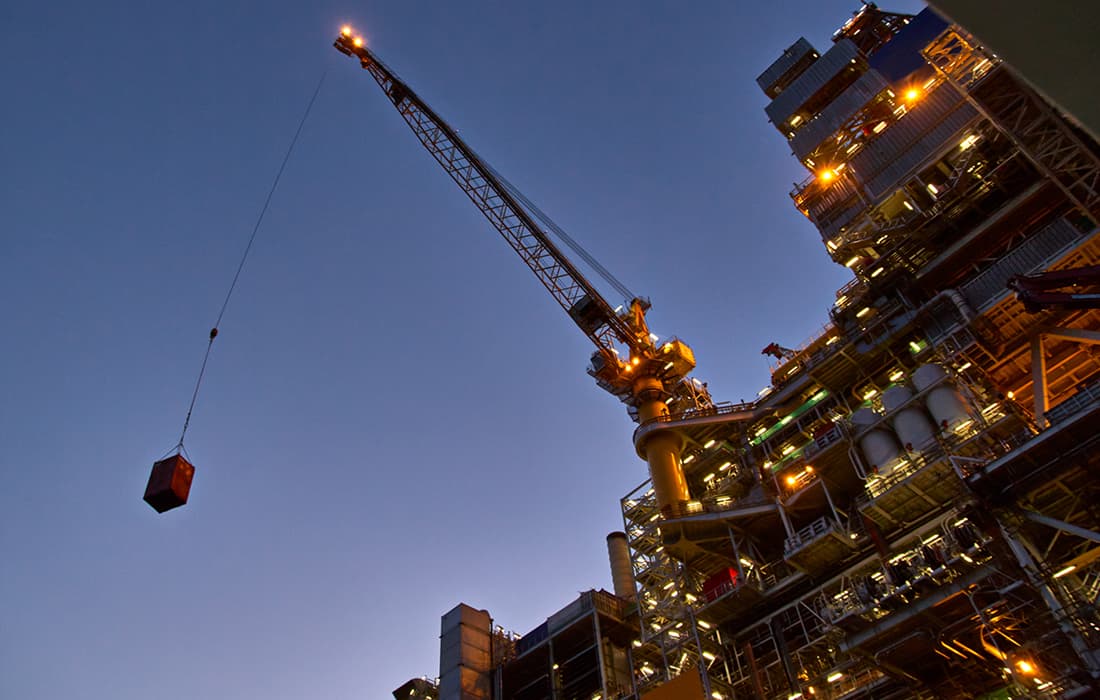Michael Laird is EnerMech's Technical Authority for Cranes and Lifting. A safety advocate, he helped draft BS 7171-2-11 with The Lifting Equipment Engineers Association (LEEA1) for the inspection, maintenance, and thorough examination of offshore cranes. Here, he discusses the key challenges facing the offshore crane industry.
The offshore lifting industry is undergoing a period of significant transformation, and the sector has never been more dynamic or competitive than it is today. Current challenges such as increasing sustainability, enhancing safety and driving greater collaboration are also creating significant opportunities for the sector.
Safety protocols are a key priority in lifting operations with an increasing focus on continuous improvement with technical standards. This includes the BS 7171-2-11 for Code of Practice for the safe use of cranes - Inspection, Maintenance and thorough examination - Offshore Cranes. This standard will address a gap within the current BS 7121-2 series for offshore cranes, providing critical guidance on ensuring the safety of lifting equipment in a sector characterized by extreme conditions.
At EnerMech, we have also embraced additional protocols such as the Technical Query (TQ) process, cornerstone of our global risk management strategy. It assesses deviations from standard crane operation and maintenance, ensuring they are formally approved before work commences.
The offshore crane market is experiencing a shift in demand like we have never seen before. There has been a remarkable increase in the number of offshore wind farms in development placing increased pressure on crane operations, particularly those involved in the installation and maintenance of wind turbines especially where there is a need for more sophisticated cranes for harsher conditions and deep water.
Stricter environmental standards, particularly concerning emissions and energy consumption are compelling operators to seek out cleaner and more sustainable solutions. This has led to the development of fully electric cranes and remote operation technology with innovations such as hybrid systems or the incorporation of hydrogen fuel cells into offshore crane systems possibly becoming more prevalent.
EnerMech has developed a digitized inspection system which is streamlining asset inspection and maintenance routines by replacing the outdated, paper-based methods still common in the sector. This innovative approach enables precise identification and prioritization of maintenance needs and is a key component in improving safety through enhanced hazard identification and reducing downtime, allowing operators to resolve potential issues before they escalate into operational failures.
As the offshore crane market evolves, partnerships between industry players - such as crane manufacturers, service providers, and regulatory bodies - will be essential to ensuring safety, efficiency, and sustainability. Enhanced industry standards like BS 7171-2-11 will continue to play a pivotal role in this collaboration, providing a unified framework that ensures best practices are followed across the sector.
References:
BSi Standard Development: “BS 7121-2-11:202X Code of Practice for the safe use of cranes – Inspection, Maintenance and thorough examination – Offshore Cranes”
https://standardsdevelopment.bsigroup.com/projects/9024-11073#/section
GWEC Global Offshore Wind Report 2024: https://gwec.net/wp-content/uploads/2024/04/GWR-2024_digital-version_final-1.pdf
